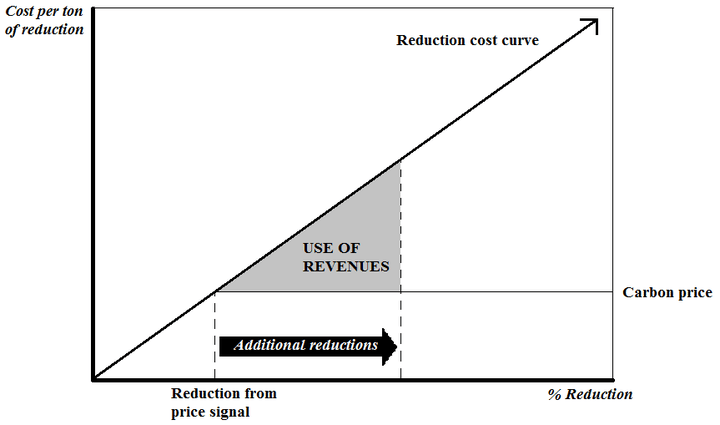
Climate science is painting a pretty dire picture these days. Scientists are increasingly able to tie heat waves, floods, and other extreme weather events to climate change, and we’ve only seen about 1 degree of warming. Every month seems to smash a new temperature record. To have a decent chance of avoiding the worst impacts of climate change, the countries of the world agreed in Paris in December to try to limit warming to 2ºC, with the aim of keeping warming to 1.5ºC – but we are nowhere near a trajectory to achieve those goals. We are reducing greenhouse gas emissions faster than we ever have – but not fast enough.
To address climate change, one of the key policies being discussed and implemented in some U.S. states and in various places around the world is carbon pricing. Putting a price on carbon dioxide emissions, whether via a carbon tax or a cap-and-trade mechanism, could send a price signal that the atmosphere is no longer a free dumping ground for greenhouse gas pollution, spurring emission reductions and clean energy deployment. Carbon pricing is without question a useful policy (though it’s not the end-all be-all), but carbon pricing alone is not enough. It is difficult to imagine any carbon pricing policy making it through a political process at a level sufficient to achieve the reductions necessary; there are real political constraints.
There is a way, though, to make carbon pricing policies much more powerful drivers of reductions. The key is to remember that what is done with carbon price revenues can matter just as much as the carbon price itself. Using the revenues to achieve reductions additional to those that would be driven by the carbon price, and doing so in a cost-effective way, can get us on a significantly faster emission reduction trajectory – one commensurate with the scale of the challenge we face.
Let’s take a simple example. Let’s say there’s a jurisdiction that has enacted a carbon tax of $20 per ton of carbon dioxide. Any entity that can reduce emissions for less than $20 per ton will do so, to avoid having to pay the tax. That’s the effect of the price signal sent by the carbon tax. If a reduction costs $21 a ton, however, the emitter’s incentive is just to pay the tax. But what if that emitter is given a subsidy of $1/ton? And emitters with $22/ton reductions are given a subsidy of $2/ton? Those reductions would then get made too. So let’s scale this up. Imagine that the carbon tax revenues are collected, put into a fund, and then a reverse auction is held, offering subsidies (equal to the difference between the cost of the reduction and the carbon tax level) to any emitter that wants to submit a bid for a way of achieving reductions. The subsidies would go first to the cheapest reductions beyond the price signal, working our way up the reduction cost curve until all of the carbon price revenues have been spent. The effect would be to massively increase the scale and rate of emission reductions.

How much? If you take a simplified case – assuming the reduction cost curve is linear – some quick math suggests that the answer is quite a lot, actually. Carbon taxes that would achieve a 10% reduction in emissions could instead achieve more than 40%. Taxes that would achieve a 20% reduction could instead achieve 60%. The story is the same if a cap-and-trade system is used instead of a carbon tax. Using the revenues allows a jurisdiction to get the same effects as ramping up the tax or ramping down the carbon cap – without having to actually do either. Revenues matter.
In the real world, will all of the carbon price revenues go towards achieving the next cheapest reductions? Probably not, nor is it clear that they should. Some percentage probably should go to offset the regressive effects of the carbon price on the poor. Some could go to longer-term carbon reduction investments (e.g., R&D). Some could go to help coal communities transition. Some could go to promote adaptation and resilience to climate impacts. There are countless other potential uses of the revenue. But a solid chunk of the carbon price revenues should go towards cost-effectively achieving additional reductions.
Our window for serious action to ward off the worst impacts of climate change is closing. We’ve made a good (if long belated) start in reducing emissions, but we have to do much more, much more quickly. While carbon pricing policies can help drive us towards a low-carbon future, the situation is urgent, and we have to drive faster. Carbon price revenues can help us step on the accelerator.
Dave Grossman is the Principal of Green Light Group consulting and is a Senior Advisor to the Climate Law & Policy Project.
